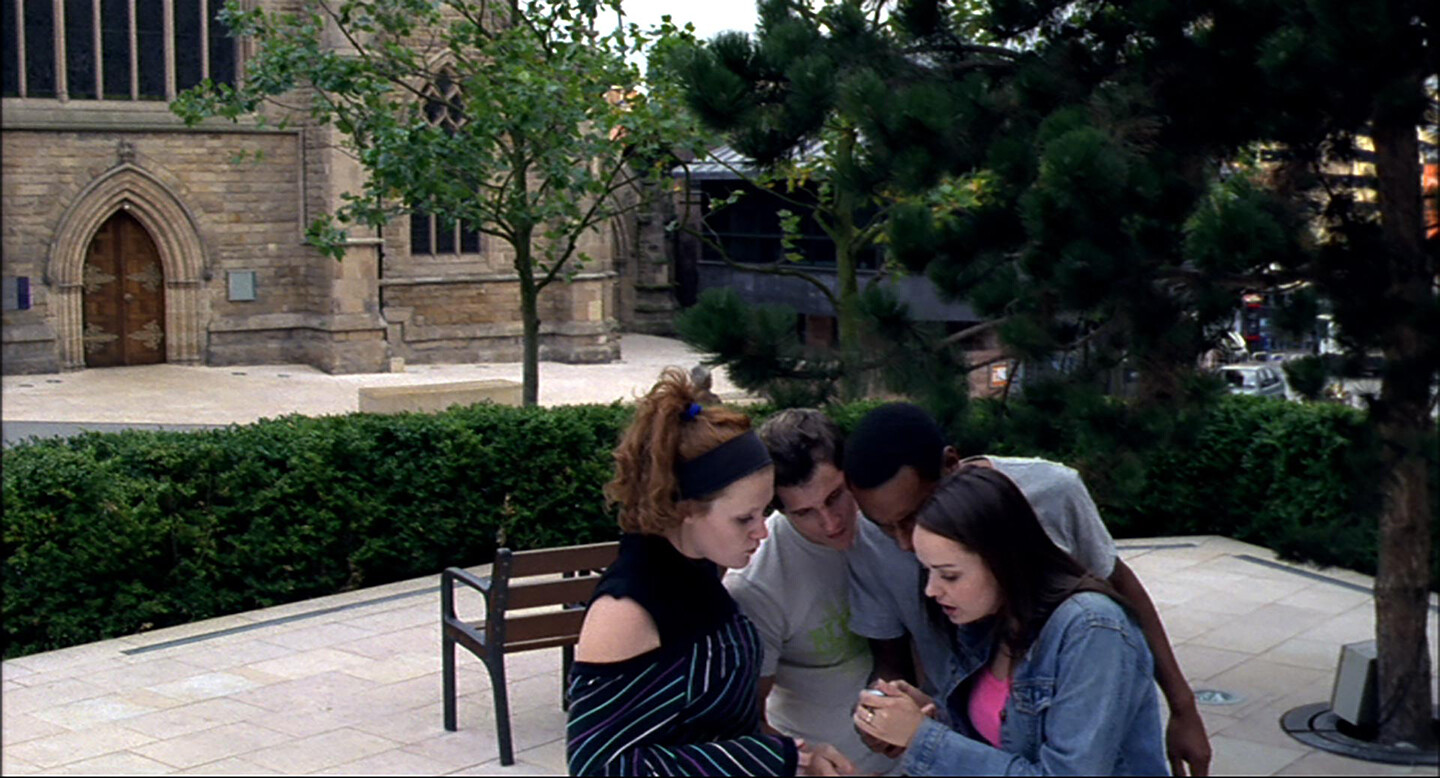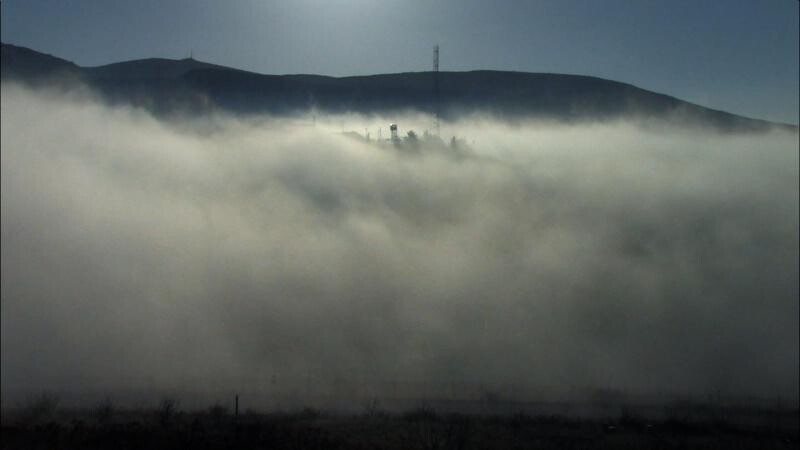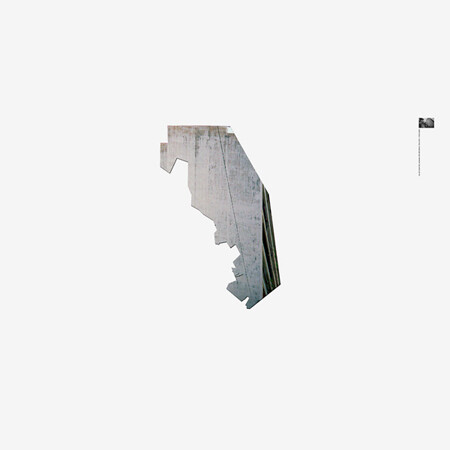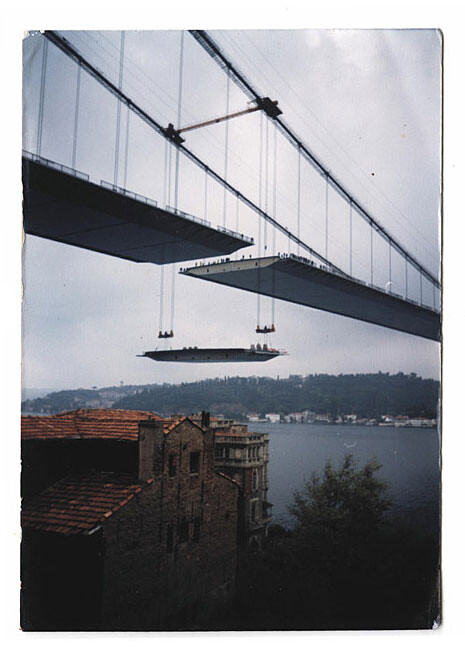Geographers say there are two kinds of islands. This is valuable information for the imagination because it confirms what the imagination already knew.
— Gilles Deleuze1
In Martin McDonagh’s 2008 film In Bruges, two hitmen are sent into hiding in the Belgian city of Bruges by their British boss. Bruges is a picturesque tourist town, the best-preserved medieval city in Belgium, and the two killers have little to do there other than discover the physical environment through their alienation. When Ken suggests to Ray that they visit a cathedral, Ray asks, “what’s up there?” Ken replies, “The view.” “The view what?” Ray asks. Ray’s reluctance to engage with the environment distinctly marks the unbearable impossibility of forming a relationship with their surroundings. As the story continues, the two hitmen are forced to reconcile the fact of their having no more reason to be in Bruges than anywhere else with an image of the town as a specific location. Here, the conditions of space and subjectivity converge—the hitmen and Bruges together ask how it is possible for an individual to relate to a place without having a specific role or function in it. In essence, how might a gap between subjectivity and location be presented within the image to create zones for other relationships to be formed between them?




In his films Blissed (2005) and Finally (2006), artist Knut Åsdam focuses on young people and their interactions with the physical environment of a city. Gestures of looking, walking, and speaking are performed by a group of young people in spaces with little relation to the subjects’ interactions. From these gestures, Åsdam teases out mini-narratives by constructing monologues from these interactions. Set in a commercial city center in historical Salzburg, the young people in the film respond to each other and circulate throughout its public spaces. In Finally, the connection with the spatial environment that its subjects seek through gesture and language is not found. The work is one of the finest examples of a gap between an architectural environment with its own conditioned memory (marking the present time) and the gestures of the individual. In the scenes, three young people try to communicate, move, fight, and utter monologues that appeal to the space for a connection when the historical garden, sculptures, and buildings around them remain still. As Åsdam searches for an aesthetic narrative in a place where the architecture is heavy with a specific history, a loss of identification with a space (as we find in In Bruges) emerges.
In Mother’s Day (2006-2008), a video work by Smadar Dreyfus, voices of mothers and their children speak over a rough, plain landscape under a bright blue sky. The landscape is that of the Golan Heights, where for several decades the local Druze community has been divided by the ceasefire line agreed upon by Israel and Syria.2 Invisible in the video, the people whose voices we hear echo in the air and fog are those engaged in the annual Syrian Mother’s Day celebration, which gathers mothers and their children on either side of the border to exchange greetings via a sound system set up for the occasion. The emotional, intimate expressions of mothers and their children appear totally removed from the landscape of the Golan Heights. Yet the possibility of a relationship between this traumatic space and its people exists. Unlike in Finally, in Mother’s Day the absence of subjects’ physical appearances allows their voices to transform the meaning of the land.
I look to the works of Åsdam and Dreyfus to explain the formation of a specific aesthetic language in which relationships between subjectivity and spatial context are in conflict. Where the two fail to meet or overlap, a sort of non-relationship is formed. Concepts such as empathy and the uncanny (especially in relation to undefined territories, architecture, and urban environments) have often been described from subject-oriented perspectives. In both Åsdam’s and Dreyfus’ works, even though their contexts vary from historic to commercial urban spaces to traumatic forced spaces, they offer unique aesthetic approaches that release subjectivity from imposed sympathetic relationships to space.
This broken connection, this “un-relation” to space, if you will, outlines what Anthony Vidler describes as a contemporary sense of the uncanny, which “is not simply a survival of a romantic commonplace, or a feeling confined to the artistic genres of horror and ghost stories.”3 Vidler further focuses on the architectural uncanny by giving the differences from the modern urban experience: “From the 1870s on, the metropolitan uncanny was increasingly conflated with metropolitan illness, a pathological condition that potentially afflicted the inhabitants of all great cities; a condition that had, through force of environment, escaped the overprotected domain of the short story. The uncanny here became identified with all the phobias associated with spatial fear, including ‘la peur des espaces’ or agoraphobia.”4 As a representation of a mental state, these feelings of the uncanny often describe the unrecognizable conditions of urban space. However, the impossibility of relating to space remains more about conditions than relationships between subjectivity and reality. These are conditions that require specific gestures and aesthetic languages as core components of their becoming.
In a lecture on items from the Atlas Group archive focusing on the visual documents of ruins, car bombs, and buildings, Walid Raad explains, “Since 1994, I have accelerated the pace of my shooting. I have felt and continue to feel an urgent need to document in particular Beirut’s streets, storefronts, buildings, and statues—but not so much its residents.”5 As in Åsdam’s work, where visible individuals seek a specific verbal or body language in their spatial environment, and as Dreyfus asserts the presence of invisible people through their voices, Raad engages a concrete relationship between the image and space in which the image is no longer a recording, but also a representation of impossible access. In turning his attention away from documenting citizens in favor of a spatial environment, he speaks to a desire to find spaces and materials to reflect relationships, rather than people and their subjectivities. Through a refusal to identify with the alienation caused by trauma, he effectively erases his own position and attempts to allow space, material, and events to speak in autonomous voices.


The Atlas Group has always used found images, clips, and archival works of Beirut during the civil war between 1975-1991.6 Raad says about The Sweet Talk File (1989), which features harshly cropped fragments of buildings, “The crops don’t represent the buildings, but the city—the un-presentation of the building of the labyrinth time, the chronology of the withdrawal of the building and an experience of its own ruin.”7


Beginning in 1920 with the story of the first car bomb on Wall Street, Mike Davis in his recent book Buda’s Wagon explains the particular effects of car bombs when used within an urban environment: “The car bomb, in other words, suddenly became a semi-strategic weapon that, under certain circumstances, was comparable to air power in its ability to knock out critical urban nodes and headquarters as well as terrorize the populations of entire cities.”8 In The Thin Neck File (1975-1991) Raad, as both citizen and photographer, focuses on the phenomenon of urban car bombs.9 Raad also points out in his lectures that the city, as a concrete political network, is effectively broken apart by the use of car bombs, which serve to shatter the division between private property and public space—the simple fact of owning vehicles which could potentially become weapons automatically forced neighbors to become suspicious of each other. “Every neighbor is under scrutiny for owning a car, even in the absence of crime. The shift from private to public has already happened.”10 In an urban space re-defined by catastrophe, the bond between subjects and spaces is effectively severed. Yet in Raad’s works, the image re-emerges as a form for this otherwise unavailable condition.
In a video installation by artist Cevdet Erek entitled The Second Bridge (2003), a question concerning the relationship between a space and the accessibility of the past is presented. How can a real moment be captured by an image that points to the impossibility of such a moment within the social sphere? In The Second Bridge, an image of a found photo depicting a bridge undergoing construction is paired with a second moving image of a national flag in an exhibition setting. A remote past and a national history reveal themselves through the urban landmark of the bridge, while the ambiguity of the image suggests a broken, impossible relationship between a viewer and a spatial context. In each of the works I focus on here, I see possibilities not only for several different ways of expressing dynamics of time and space, but—perhaps more importantly—a possibility for gestures that constitute “non-relationships” with space.


In Michel Houellebecq’s novel The Possibility of an Island, Daniel 25, the 25th clone of Daniel 1, decides to leave his native environment to discover the world outside after reading the diary of Daniel 1. The world he finds is ruined, and as Daniel 25 possesses no human feelings, he attempts to come to terms with his new environment by positioning himself according to his lack of feelings, and not against them. In the end, however, he discovers completely new feelings that don’t correspond fully to those of a normal human being, and in effect discovers a space somewhere in between a particular spatial condition and his own subjectivity. Similar to the operations I discuss above in artworks, Houellebecq’s Daniel 25, in spite of being unable to place himself firmly in a “space,” nonetheless discovers forms for his own “un-relation” to it. David Harvey has remarked that spaces often elicit modification. “Complications sometimes arise from the modifications (which all too frequently get omitted in the telling or the writing) rather than from any inherent complexity in the notion of space itself.”11 These complications tend to represent attempts to clarify meanings associated with the ways subjectivity is considered to relate to spaces and locations. If we understand space as a given set of meanings, then we naturally assume an existing relation between spaces and subjects. But perhaps there are moments—conditions of space—in which subjectivity relates to space through an incompleteness, though infinitely incomplete gestures.
Gilles Deleuze, Desert Islands and Other Texts 1954-1974, ed. David Lapoujade, trans. Mike Taormina (New York: Semiotext(e), 2003).
When at the end of the 1967 Arab-Israeli war, an Israeli-Syrian ceasefire line and a UN patrolled demilitarized buffer zone were established on the Golan Heights, they cut right through the land of the local Syrian Druze communities, separating many families. When, in 1981, Israel unilaterally annexed the Golan Heights, most of the Syrian residents of the Golan refused to take Israeli citizenship and officially remain of “undefined” nationality status. In the absence of a peace agreement, traffic across the ceasefire line is near impossible and telecommunications are severely curtailed. However, over the years other forms of cross-border communications were developed which enabled the Druze families to stay in touch with their relatives on the other side. The most remarkable of these is the practice of calling out through megaphones across the ceasefire line fence at the “shouting hill” facing the Druze village of Majdal Shams (located in the Israeli controlled side, at the foot of Mount Hermon). (Information provided by Smadar Dreyfus, Extra City)
Anthony Vidler, The Architectural Uncanny: Essays in the Modern Unhomely (Cambridge, MA: MIT Press, 1994), 12.
Ibid., 6.
Walid Raad, Introduction to “The Withdrawal of Tradition Past a Surpassing Disaster,” (seminar lecture notes by Pelin Tan, unitednationsplaza, Berlin, February 10, 2007).
See →.
Walid Raad, “The Withdrawal of Tradition Past a Surpassing Disaster,” (seminar lecture notes by Pelin Tan, unitednationsplaza, Berlin, February 10, 2007).
Mike Davis, Buda’s Wagon: A Brief History of the Car Bomb (New York: Verso, 2008), 5.
See →.
Walid Raad, “The Withdrawal of Tradition Past a Surpassing Disaster,” (seminar lecture notes by Pelin Tan, unitednationsplaza, Berlin, February 10, 2007).
David Harvey, “Space as a Key Word,” in Spaces of Global Capitalism: Towards a Theory of Uneven Geographical Development (New York: Verso, 2006), 119.